It's Brie the plant lady with more practical gardening tips for improving the health and resilience of your soil, this time by using cover crops along with Soil³.
Cover crops have long been a standard in agriculture, and it is high time that we home gardeners start to utilize these workhorses as well.
Cover crops, often likened to green blankets, not only protect and nurture the soil but also contribute to the overall well-being of your gardening space. Let's delve into the essentials of cover cropping, from bed preparation to the diverse varieties that can transform your garden.
Bed Preparation Basics
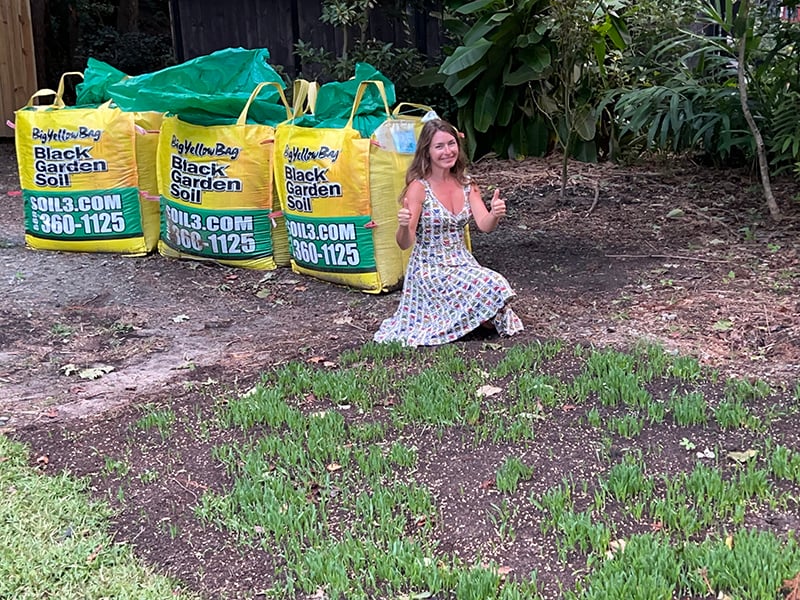 Topdress with Soil3 then direct seed on top.
Topdress with Soil3 then direct seed on top.
The first step in your cover cropping journey involves proper bed preparation. Here's a quick guide to get you started:
-
Look for sun: Opt for open spaces that receive at least half a day of sunlight. Ideal spots include typical vegetable garden spaces.
-
Top dress with Soil³: Use 2-5 inches of Veggie Mix or traditional Soil³ compost. The more you apply, the faster you'll see results. You can layer the compost on top of existing mulch and leaves.
-
Direct seed: Scatter your chosen cover crop seeds directly. Avoid starting seedlings and transplanting. Cover crops prefer direct sowing to develop substantial root systems.
-
Germination and watering: Germination should occur within 15 days for most species. Keep the area well-watered through dry times to allow the plants to establish.
-
Maturity and pruning: Most cover crops mature in 4-6 months. To prevent self-sowing, cut the plants down before they set seed. This can be done with a push mower, weed eater, or hand pruning.
Advantages of Cover Crops
Cover crops are typically planted during fallow periods, from late summer to winter. They serve as living mulch, shielding the soil from erosion caused by wind and rain. Their sprawling roots anchor the soil, preventing nutrient runoff and promoting stability. Additionally, cover crops play a vital role in weed management, creating a dense carpet of vegetation that outcompetes weeds for sunlight, reducing the need for manual weeding.
Having been a dedicated cover cropper for a decade, I can attest to the remarkable difference they make in a short time. Maintaining ground cover throughout the year significantly reduces the establishment of unwanted plants. Moreover, for those of us dealing with sandy soil, cover crops offer effective strategies to increase organic matter and reduce disease and nematode infections. Did you know that mustard and daikon radish have biofumigant properties that suppress soil-borne pests and diseases? It is TRUE! Plants are always the solution!
Cover Crop Categories
Cover crops can be categorized into three main types based on their functions.
NITROGEN FIXERS
Certain legumes form symbiotic relationships with nitrogen-fixing bacteria, pulling atmospheric nitrogen into the soil. Incorporating these into the soil releases stored nitrogen, acting as a natural fertilizer for upcoming plantings. Favorites include Austrian Winter Peas, Fava Beans, Hairy Vetch that I plant in the fall; and Crimson Clover, Sunn Hemp, Peanuts, and Soybeans that I plant in the spring.
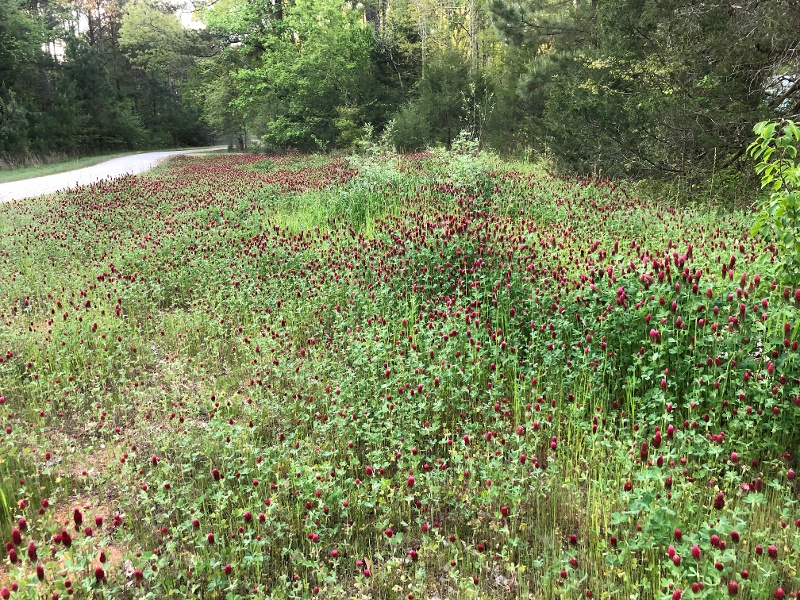 This is tough roadside soil because it's compacted and there's no organic matter. The verdant, dark green crimson clover in the upper right is where shrubs were planted and topdressed with Soil³ compost. The lesson is that while crimson clover will build up bad soils over time, it sure does love the good stuff too. Photo by Hillary Thompson.
This is tough roadside soil because it's compacted and there's no organic matter. The verdant, dark green crimson clover in the upper right is where shrubs were planted and topdressed with Soil³ compost. The lesson is that while crimson clover will build up bad soils over time, it sure does love the good stuff too. Photo by Hillary Thompson.
NUTRIENT SCAVENGERS
Grains may seem unconventional to home gardeners, but they really are one of the most important plants to grow through the cool season. They have robust root systems that act as natural tillers that reach to 36-48” deep helping break up compacted soil, improving aeration and water infiltration for subsequent crops.

Cereals like barley, oats, rye, and wheat are adept at mobilizing and absorbing essential nutrients, contributing to soil fertility. Not only do they release bioactive compounds through allelopathy, influencing the growth and nutrient availability of neighboring plants, but the roots of these nutrient-scavenging grains exude organic acids and enzymes that enhance the solubility of minerals in the soil. This enables the grains to access nutrients such as phosphorus (P), a vital element for plant growth, more efficiently.
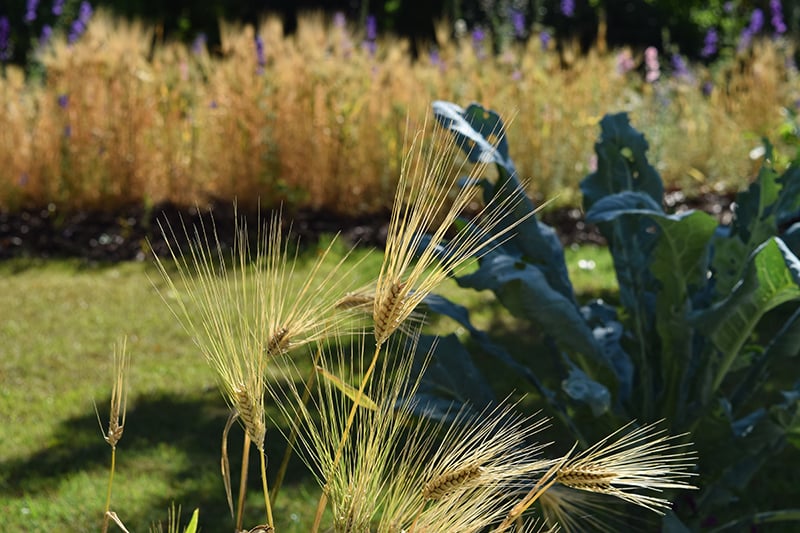 Wheat is a nutrient scavenger cover crop.
Wheat is a nutrient scavenger cover crop.
These grains are sown in fall and mature in June. They grow all winter and help brighten the garden with their fresh green foliage that animals enjoy browsing on. I have noticed my cats especially like to nibble the tips of oats, which are often sold as “cat grass” in small packages! Though I am not intentionally feeding the herd of deer who visit my garden nightly, the grains do provide forage for them which, in theory, reduces the ornamentals that they devour.
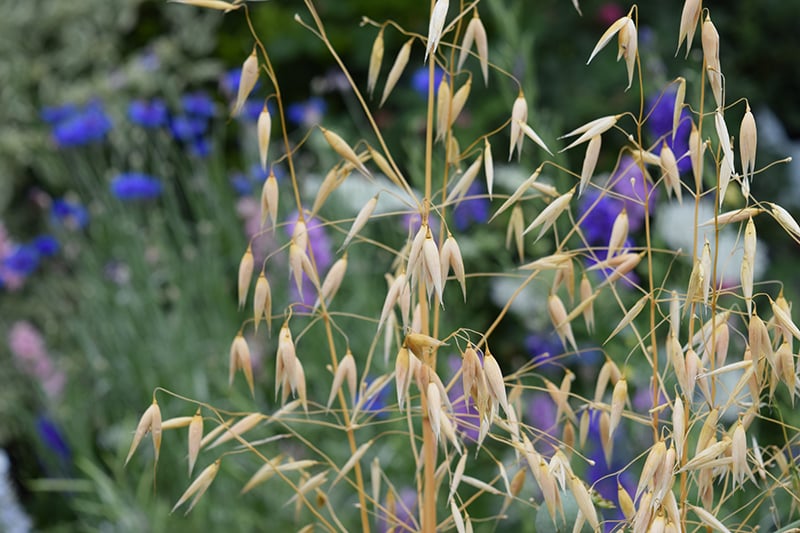 Oats is another nutrient scavenger in the Poaceae (grass) family.
Oats is another nutrient scavenger in the Poaceae (grass) family.
CHOP AND DROP
This sustainable practice involves cutting down certain plants and leaving them as mulch on the soil surface. I do this by using a battery-powered push lawn mower. This cover crop method helps improve soil fertility, retain moisture, and suppress weeds. Daikon Radish and Mustard are excellent choices for fall, while Buckwheat and Crimson Clover work well in spring.
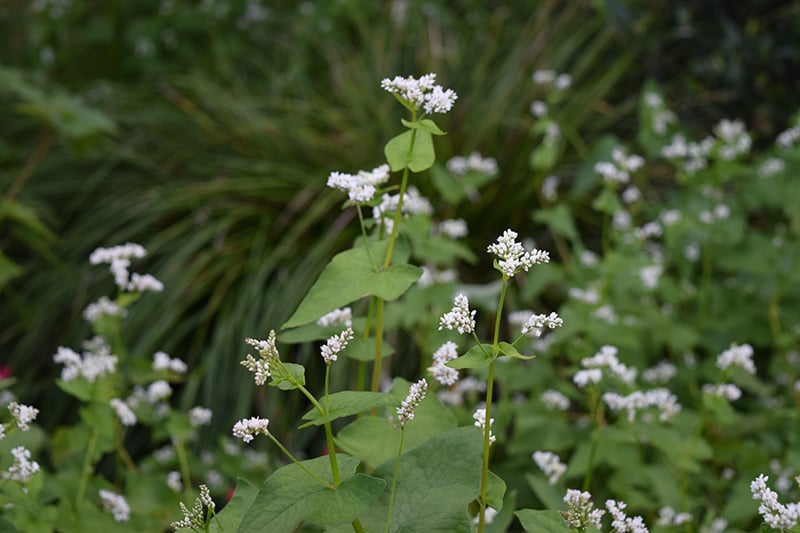 Buckweat is a summer cover crop.
Buckweat is a summer cover crop.
Untraditional Cover Crops
Because I like to be creative, I've experimented with untraditional plants that serve as cover crops in open spaces. I’ve been growing many of these crops my entire life, but the role they play changed significantly when I started treating them as a cover crop instead of growing them in isolation. I am now obsessed with “cool season cottage gardening” which is just an HOA friendly way of employing the power of cover crops.
Flowers are always a driving force for interest, and that was exactly where I started. By seeding annual flowers, you can fill in your open spaces and have a glorious display! My mixes involve annual flowers, grains, greens, and root crops all combined to make a spectacular spring show while achieving all the goals of cover cropping.
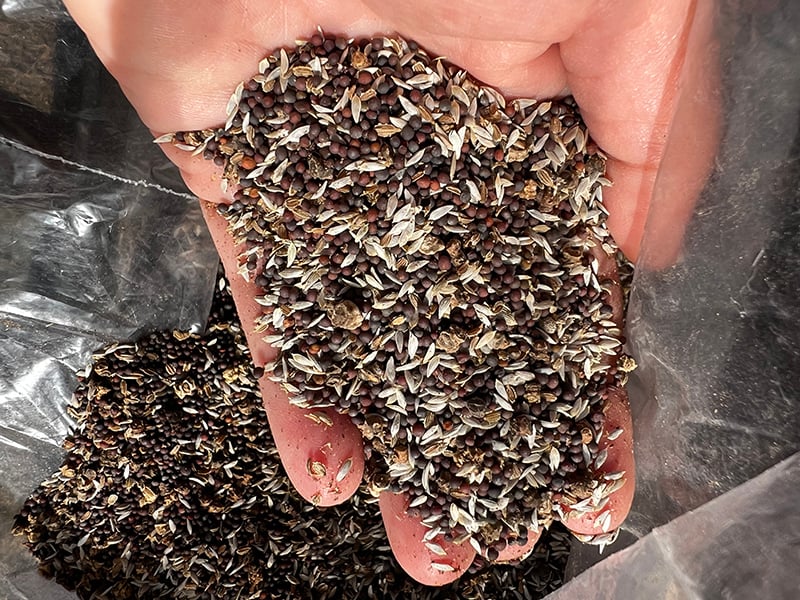 A mix of cover crop seeds.
A mix of cover crop seeds.
COOL SEASON FLOWERS: My favorites include Bachelor Buttons, Campion, Larkspur, Nigella, Breadseed Poppies, Corn Poppies, and California Poppies.
COOL SEASON GREENS: Grow Arugula, Chard, Cilantro, Lettuce, Kale, and Mustard for a nutrient-rich cover.
COOL SEASON ROOT CROPS: Plant Carrots, Daikon Radish, Parsnips, and Turnips for soil-enhancing benefits.
 Larkspur and Queen Anne's Lace (a.k.a. wild carrot)
Larkspur and Queen Anne's Lace (a.k.a. wild carrot)
For a glorious spring display, all of these are best directly seeded after several hard frosts when the soil is below 55°F. December through the end of January is the ideal window for gardeners in zones 7-9.
Like the other varieties of cover crops, these prefer to grow in full to part sun. Spread out 2-5” of Soil³ compost, toss the seed on top and rake to ensure good seed to soil contact. Poppies are the main exception to this rule and must be surface sown, as they require light to sprout.
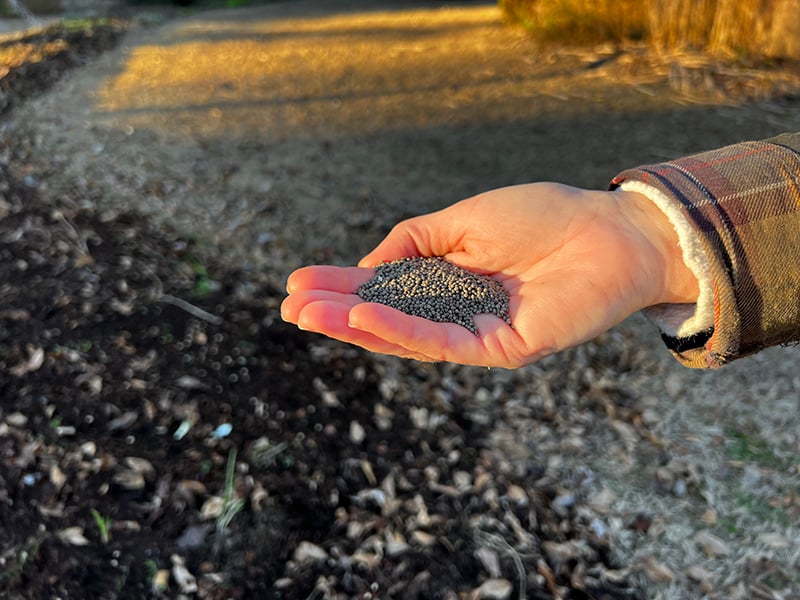 Toss the seed on top of a layer of Soil³ compost or Veggie Mix.
Toss the seed on top of a layer of Soil³ compost or Veggie Mix.
Germination will occur within 3 weeks. Keep beds moist through the winter growing season and keep a watch for unwanted weeds. These will burst into bloom in mid- late spring, set seeds, and die all before summer officially begins.
 You've probably noticed that poppies are one of my favorite flowering cover crops.
You've probably noticed that poppies are one of my favorite flowering cover crops.
Interested in learning more? Here is my playlist teaching everything you need to know about using cover crops in a home garden.

In summary, cover crops are the unsung heroes working beneath the surface, nurturing, and fortifying the soil for the seasons to come. They work hand in hand with Soil³ compost or Veggie Mix to improve your garden in the long term. So, as you embark on your cover crop journey, sprinkle some cover crop seeds on a bed of Soil³ to enhance your growing experience.
Happy gardening, and may your garden thrive with the vitality of cover crops!
Brie
All photos by Brie Arthur unless otherwise noted.




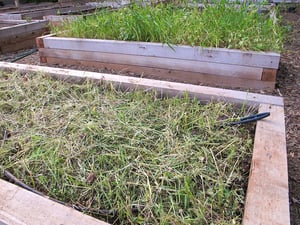




Did this help you out? Have any questions for clarity? Leave a comment below!